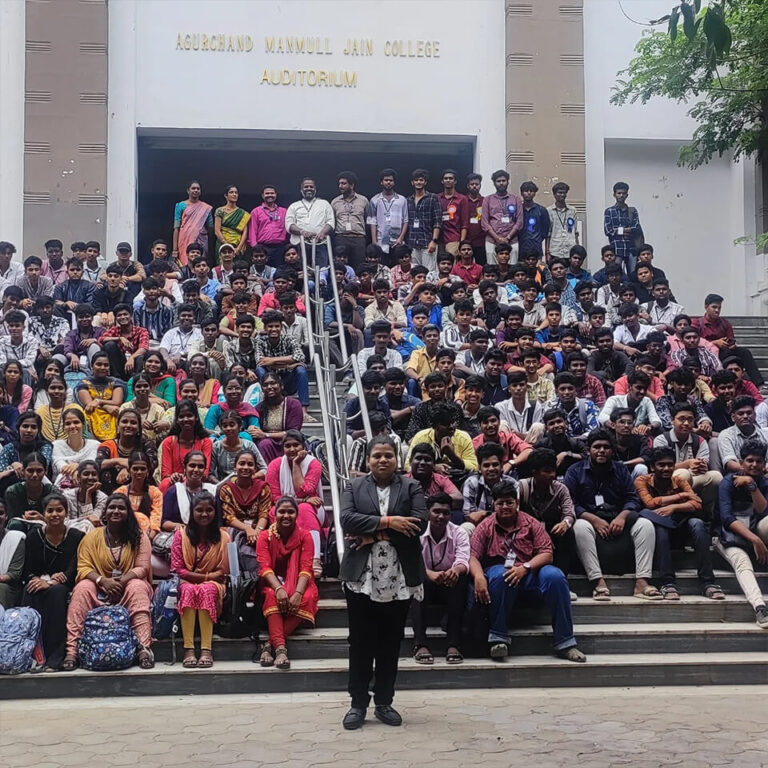

Dr. Santhi Saravanan delivered a speech at Karpaga Vinayaga College of Engineering and Technology that provided valuable insights into the critical process of problem ideation. By employing techniques such as brainstorming, mind mapping, reverse thinking, the SCAMPER method, and the Five Whys, individuals and organisations can effectively identify and address challenges. Emphasising a positive and collaborative environment, as well as encouraging diverse perspectives and creative risk-taking, is essential for fostering innovation. Through these practices, teams can not only generate a wealth of ideas but also develop practical solutions that can significantly impact their fields and communities.
Problem Ideation
Problem ideation serves as a pivotal stage in the innovation process, wherein individuals and organisations actively identify and articulate challenges or opportunities that merit attention. This foundational step acts as the catalyst for creativity, enabling the generation of innovative solutions that can lead to meaningful change. On November 5th, Dr. Santhi Saravanan delivered a thought-provoking speech on this topic at Karpaga Vinayaga College of Engineering and Technology, as part of a workshop organised by the Entrepreneurship Development Cell. This write-up delves into the key techniques of problem ideation discussed in the speech, emphasising their significance and practical application.
Understanding Problem Ideation
At its core, problem ideation is about recognizing gaps or challenges that can be transformed into opportunities for improvement or innovation. This process is essential for fostering a culture of creativity and proactive problem-solving within any organisation. By systematically identifying problems, teams can better understand their context and potential solutions, leading to innovative outcomes that drive progress.
Key Techniques for Problem Ideation
Dr. Saravanan outlined several effective techniques designed to stimulate creative thinking and uncover valuable problem areas. Each technique offers a unique approach to ideation, catering to different thought processes and perspectives. Brainstorming is a well-known technique that encourages participants to share ideas freely without fear of judgement. The process can be broken down into a few guiding principles:
- Free-Flowing Ideas: Participants are encouraged to express their thoughts openly, fostering a safe environment for creativity.
- Quantity Over Quality: The emphasis is on generating as many ideas as possible. This abundance can lead to unexpected and innovative solutions.
- Build on Each Other: Ideas can serve as stepping stones for further thoughts, creating a collaborative atmosphere where concepts evolve and mature.
Mind mapping facilitates visual thinking by creating a diagram that represents ideas and their interconnections. This technique involves:
- Visual Representation: By laying out thoughts visually, participants can see relationships and hierarchies among concepts.
- Divergent Thinking: Mind maps encourage exploration of various branches and subtopics, allowing for a broader scope of investigation.
- Identifying Patterns: As ideas are organised visually, recurring themes or clusters may emerge, highlighting areas that require attention or further exploration.
Reverse Thinking
This technique encourages participants to challenge existing assumptions and conventional wisdom by:
- Questioning Norms: By deliberately questioning established beliefs, teams can uncover overlooked opportunities for innovation.
- Identifying Pain Points: Focusing on what is not working well can reveal critical areas for improvement.
- Exploring Unconventional Solutions: Thinking in reverse can lead to creative breakthroughs that wouldn’t emerge through traditional problem-solving methods.
The SCAMPER technique is a structured approach to creative thinking, focusing on the following actions:
- Substitute: Consider replacing components of a product or service with alternatives to spark new ideas.
- Combine: Merge different ideas or concepts to create something unique.
- Adapt: Modify existing solutions to suit new contexts or challenges.
- Modify: Change aspects such as form, colour, or size to see how these adjustments impact usability or perception.
- Put to Another Use: Explore new applications for current ideas, broadening their utility.
- Eliminate: Strip away unnecessary elements to enhance efficiency or clarity.
- Reverse: Turn ideas inside out to uncover new perspectives.
Tips for Effective Problem Ideation
To maximise the effectiveness of these techniques, Dr. Saravanan emphasised several practical tips for conducting problem ideation sessions:
- Create a Positive Environment: Foster open-mindedness and collaboration among participants to encourage the free exchange of ideas.
- Embrace Diversity: Bringing together individuals from varied backgrounds and perspectives can enhance creativity and lead to more innovative solutions.
- Don’t Fear Failure: Encourage experimentation and risk-taking, as these are often precursors to breakthrough ideas.
- Use Visual Aids: Incorporating visual elements can help clarify complex problems and spark new insights.
- Take Breaks: Allowing participants to step away from the problem can provide fresh perspectives and renewed energy for ideation.
Practical Application: Improving Online Learning Experiences
To illustrate these concepts, Dr. Saravanan presented a practical example of problem ideation focused on “Improving Online Learning Experiences.”
- Brainstorming: Participants could identify various issues such as:
- Lack of interaction with instructors.
- Technical difficulties faced by students.
- Challenges in maintaining motivation.
- Overload of information and resources.
- Mind Mapping: A mind map could be created with “Online Learning” at the center, branching out to subtopics like:
- Engagement: How to enhance interaction between students and instructors.
- Technology: Identifying tools and platforms that could facilitate better learning experiences.
- Student Support: Exploring ways to provide additional resources and assistance to learners.
- Reverse Thinking: To stimulate further ideation, participants might ask questions like:
- How can we make online learning more tedious and boring?
- What if we removed all interaction and feedback from online courses?
By applying these techniques, participants can uncover a comprehensive range of problems and opportunities within online learning, setting the stage for innovative solutions that enhance the overall educational experience.
This was part of an outreach programme that Dr. Santhi Saravanan is undertaking various avenues for educating and training people about entrepreneurial skills. She has been offering internship programmes, mentorship programmes, workshops and personalised training modules for various groups of people. Her goal is to educate and mentor many people about being good business people.
